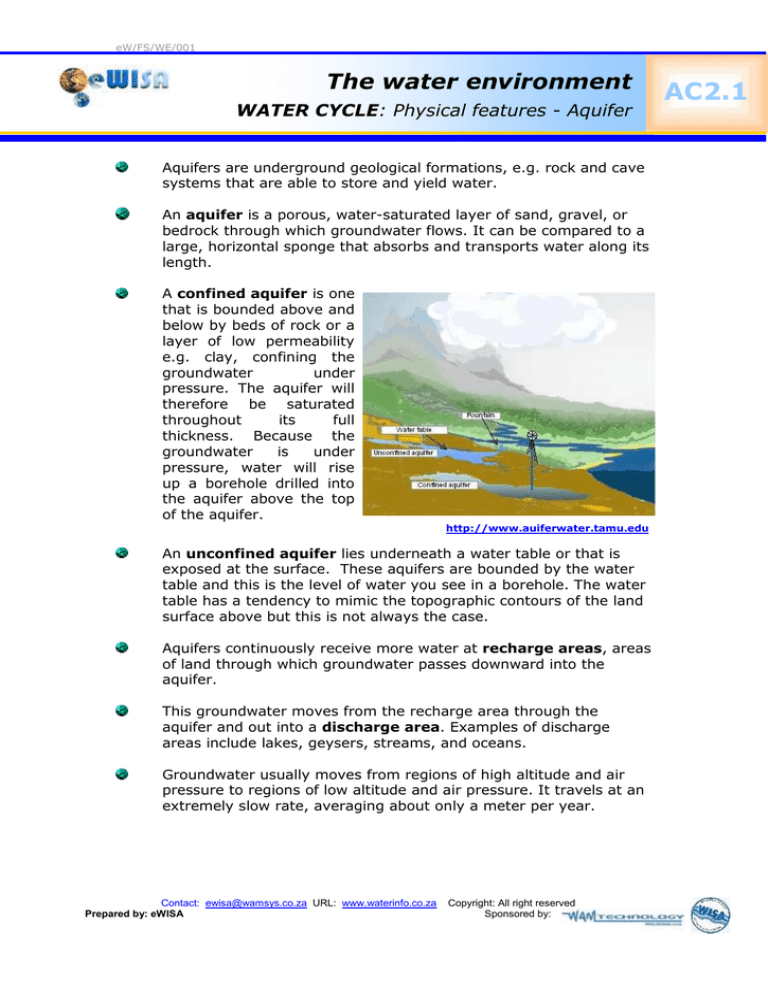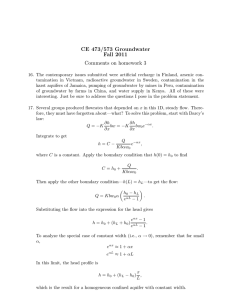
eW/FS/WE/001
The water environment
WATER CYCLE: Physical features - Aquifer
Aquifers are underground geological formations, e.g. rock and cave
systems that are able to store and yield water.
An aquifer is a porous, water-saturated layer of sand, gravel, or
bedrock through which groundwater flows. It can be compared to a
large, horizontal sponge that absorbs and transports water along its
length.
A confined aquifer is one
that is bounded above and
below by beds of rock or a
layer of low permeability
e.g. clay, confining the
groundwater
under
pressure. The aquifer will
therefore be saturated
throughout
its
full
thickness. Because the
groundwater
is
under
pressure, water will rise
up a borehole drilled into
the aquifer above the top
of the aquifer.
http://www.auiferwater.tamu.edu
An unconfined aquifer lies underneath a water table or that is
exposed at the surface. These aquifers are bounded by the water
table and this is the level of water you see in a borehole. The water
table has a tendency to mimic the topographic contours of the land
surface above but this is not always the case.
Aquifers continuously receive more water at recharge areas, areas
of land through which groundwater passes downward into the
aquifer.
This groundwater moves from the recharge area through the
aquifer and out into a discharge area. Examples of discharge
areas include lakes, geysers, streams, and oceans.
Groundwater usually moves from regions of high altitude and air
pressure to regions of low altitude and air pressure. It travels at an
extremely slow rate, averaging about only a meter per year.
Contact: ewisa@wamsys.co.za URL: www.waterinfo.co.za
Prepared by: eWISA
Copyright: All right reserved
Sponsored by:
AC2.1








